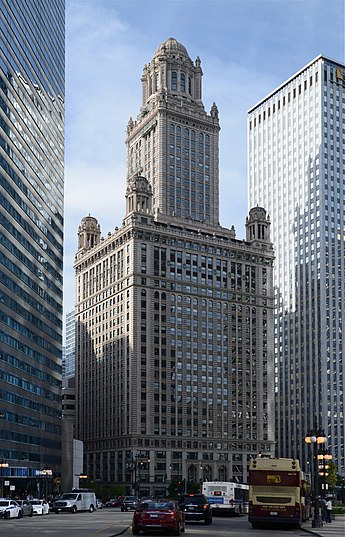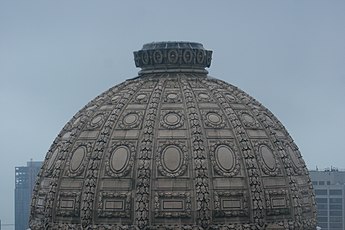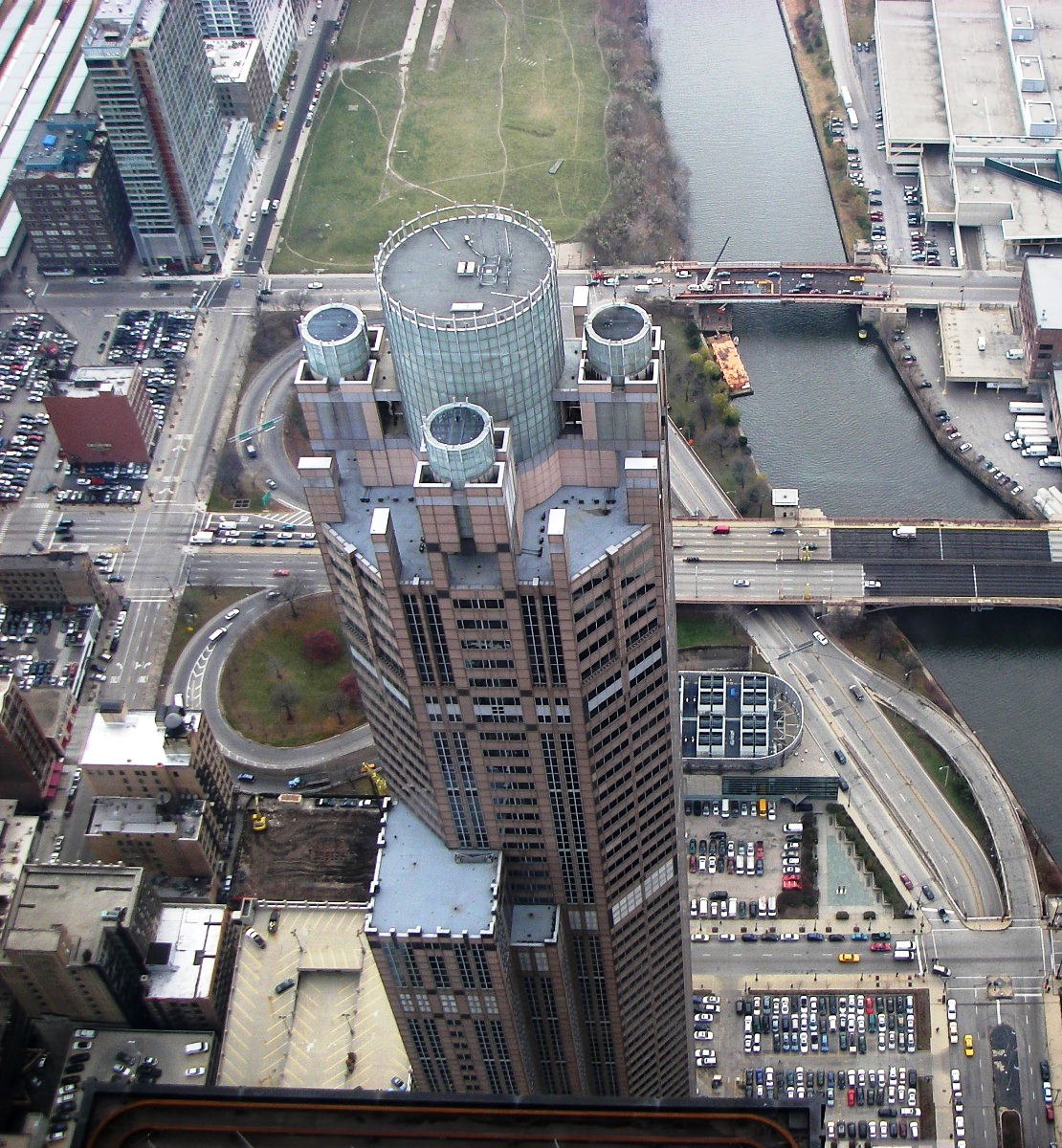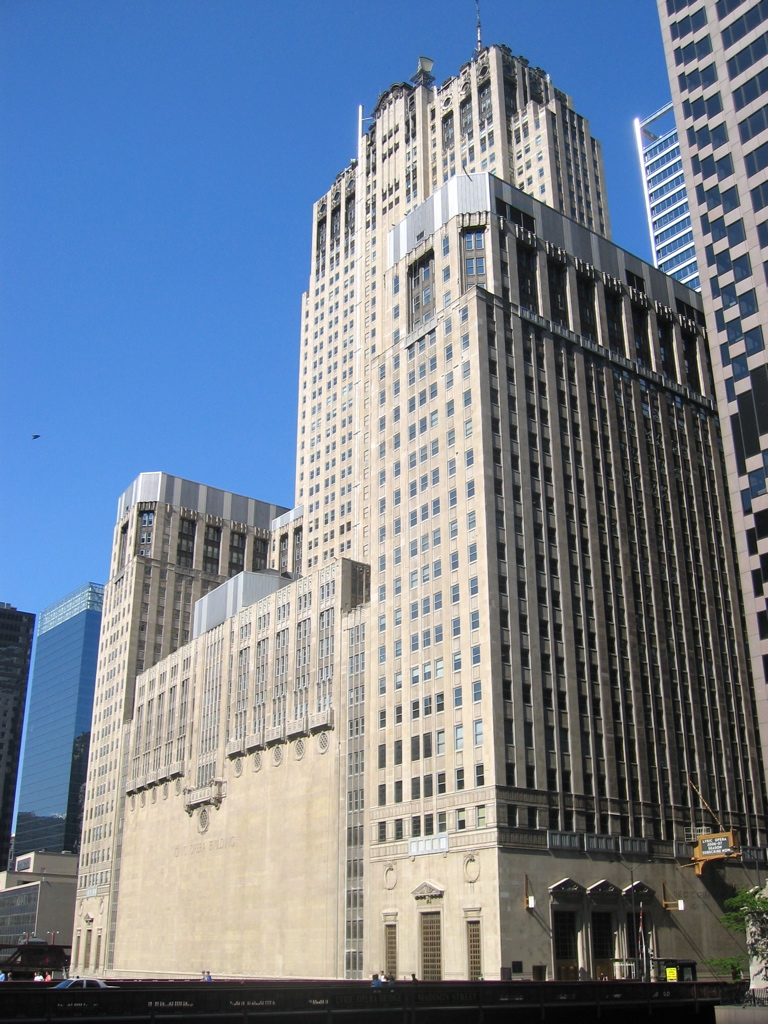By J.J. Tindall
The first in a new, occasional series.
Despite our reputation as a conservative meme for murder and mayhem, tourism in Chicago is thriving. In 2018, the city welcomed 57.7 million visitors, up 2.4 million from 2017. Hotel occupancy rose 4.4 per cent to 11.8 million rooms, and a reader’s poll in the October Conde Nast Traveler named Chicago the “Best Big City” for tourists.
And architecture boat tours are consistently cited as among the most popular attractions here for visitors. The company I have led tours for since 2012 (I started giving tours downtown in 1986), Shoreline Sightseeing, and specifically the Architecture River Cruise, has, for the last two years, been named TripAdvisor’s “Most Popular Tour in the U.S. & 2nd Most Popular in the World after the Vatican.” When you come to Chicago, an architecture tour is de rigeur, like deep dish pizza, hot dogs and live blues.
But I believe if we are going to capitalize on and sustain this popularity, we need to do some serious myth-busting, or, at the very least, identify even with affection which popular stories are downright untrue or lacking credible documentary evidence. Call me a Spoil Sport if you will, but I think the truth is more interesting than the legend(s).
Otherwise, we fall into the “many people have said” trap that is endemic to our social discourse these days. And in some cases, unconfirmed if charming stories are included in the scripts that tour guides are required to follow. Inexperienced tour guides will cling to these scripts and are all too hungry for alluring trivia that make them seem especially wise.
Mind you, in my experience, more people believe that Mrs. O’Leary’s Cow started the Chicago Fire than that we reversed the Chicago River. True Story. The lore becomes legend, which is beloved, and then expected. (The Chicago City Council officially exonerated the O’Leary family, and cow, in 1997).
Too many tour companies pander to the market, purposefully telling Tall Tales because they’re popular. Hillary Marzec, of Inside Chicago Walking Tours, one of the leading tour companies in the city (Five Star TripAdvisor average rating w/over 1,200 reviews), concurs:
“Unfortunately, as tours operate more or less seasonally, you often get guides who regurgitate a script rather than putting any research into it on their own,” she messaged me. “And that’s one of the benefits of owning and operating a small business: I’m not beholden to any ‘bottom line’ handed down to me from higher-ups, and I can actually care more about the myth-busting and the authentic, real stories and history than about the dollars coming in.”
As with most veteran Chicago guides, she can recite a litany of commonly peddled myths & falsehoods presented by some of the most revered brands in the city.
“One of the easiest myths to ‘bust’ is that the Water Tower is the ‘only’ building that survived the Great Fire, which I hear told by guides ALL THE TIME. All you have to do is look across the street to see (and go inside!) the Pumping Station, which dates from the same year, or check out the bell tower of St. James Episcopal Cathedral a couple blocks away, which predates the Water Tower by 12 years. Or the all-too-famous ‘haunted bullet hole’ in Holy Name Cathedral, which is actually a hole from where the church sign used to hang.”
For the last decade, my specialty has been river boat architecture tours, so my pet peeves are focused on the route from the mouth of the Chicago River at Lake Michigan up the North Branch to Chicago Avenue, and down the South Branch to Roosevelt Road.
Three prominent myths in particular really get my goat:
1. That Al Capone used the car elevator at the old Jewelers Building to ride to the speakeasy in the dome on top.
2. That the white lights atop 311 S. Wacker Drive (“The White Castle Building”) are inspired by the engagement ring of the architect’s late wife.
And the one that I find most egregious and most commonly still propagated:
3. That the Civic Opera House was specifically designed for Commonwealth Edison’s Samuel Insull as a throne with its back to New York City, from which he had been unceremoniously driven out of (and that it was built for his opera-singing mistress; right out of Citizen Kane).
Romantic, endearing, surprising (even shocking). And without exception, total bullshit.
What is lacking in all three cases is, again, credible documentary evidence.
One of the most experienced historian/tour guides in Chicago today is Adam Selzer, author of H.H. Holmes: The True Story of the White City Devil, founder of the Mysterious Chicago history blog, and an in-demand guide for both boat and walking tours. Selzer is particularly skilled in archival research, where he excels in finding precisely the kind of credible, documentary evidence that supports or debunks the common lore. We’ll rely primarily on him now to straighten us out.
*
Let’s start with the story about Al Capone & the old Jewelers Building.

By Alvesgaspar – Own work, CC BY-SA 4.0, Link
The story I used to hear regularly was that Al Capone used the car elevator to ride up to the speakeasy in the building’s dome. As in all of these cases, people still ask why I didn’t tell that story, or, in fact, anything at all about Capone. (What I want to say but can’t is “Because I’m not aware that he designed any of the buildings.”)

By User:Thshriver (page does not exist) – Own work, CC BY-SA 3.0, Link
There was a working car elevator from the building’s opening in 1925 until 1939. There’s no record of a speakeasy in the dome (even informally; as Selzer points out, even without official records, there’s usually plenty word of mouth regarding known speakeasies) but a legal nightclub did open in the dome in 1937, well after Capone was in the slammer.
*
Then, the myth of the “crown” of 311 S. Wacker (1990).
 By Ingvar-fed – Own work, CC BY-SA 3.0, Link
By Ingvar-fed – Own work, CC BY-SA 3.0, Link
The prevailing myth about the white lights in the barrel-like crown of this building just south of Willis Tower is that the design is based on the engagement ring of the architect’s late wife. Firstly: We have no credible documentary evidence of this story being true. It’s a “many people have said” number that gets passed on and on. And it’s another one that folks love and will often ask after.
And as we shall see with the lore of the Civic Opera House, this part of the building’s design is simply a defining characteristic of the style, in this case, Post-Modern corporate architecture (roughly late ’70s-late ’90s). Along with more varied materials than prevalent in the Modern era (roughly ’40s-’70s), and with generally more complicated overall form, the dome of many buildings in this style routinely incorporate elements of older forms on nearby buildings.
Other examples include 77 W. Wacker Drive (the former United Airlines Building, 1992), with its Greek Revival Crown and 190 S. La Salle St. (1987), with its Chicago Style crown, a tribute to the Masonic Temple which was nearby in the late 19th century. The crown at 311 S. Wacker is a tribute to the French Gothic crown of Tribune Tower.
*
Finally, Citizen Kane and the Civic Opera Building (1929).
 By User:JeremyA – Own work, CC BY-SA 2.5, Link
By User:JeremyA – Own work, CC BY-SA 2.5, Link
The building is often said to be designed to resemble a throne with its back to New York City, a symbol of the contempt in which Commonwealth Edison’s Samuel Insull, who was involved in commissioning the Opera Building, held for the city he had to leave in disgrace. The issue is, once again, predominantly architectural. The “recess” that creates the throne-like look was actually required for all new buildings by city ordinance at the time, to maximize light and air down to ground level and minimize the “canyon” effect of a series of tall, flat-fronted buildings.
In fact, most of the other Art Deco buildings of the era in Chicago resemble thrones. As I would describe the overall style (at the time known as Streamlined or Streamlined Moderne): “A tall, central tower of stone or brick around a steel frame, tapering in at the top, over two shorter structures on either side of the base and a recess inward, making the structure look like a throne.” But that would also describe Riverside Plaza (1929), directly across the river from the Opera Building (with its back to Kansas City?!), and both the La Salle-Wacker Building and the Chicago Board of Trade (both 1930; with their backs to St. Louis?!).
I refer to Occam’s Razor here: the simplest explanation tends to be the best, especially if it can be readily affirmed with other evidence or examples.
As for the Citizen Kane parallel: that one actually skirts the edges of truth. Insull’s wife was an actress, not an opera singer, and Kane screenwriter Herman Manckiewicz did incorporate his experience as a critic panning one of her late-career Broadway performances into the Kane story. And it was a member of Chicago’s hallowed McCormick family who had an opera singer for a mistress. There’s no record of him building an opera house.
That these myths still abound in the Google era is, in my judgement, inexcusable (and believe me, it’s quite a thing to give tours and watch people hit their phones when they don’t believe something). Again, we can entertain and identify the lore with affection but also emphasize what we know to be true. This way we can maintain and even improve our hard-earned reputation as a no-bullshit city well worth visiting.
–
See also:
* Kogan: Poet J.J. Tindall Finds Freedom In Guiding Boat Tours.
* J.J. Tindall’s Chicagoetry.
* Tindall: Ballots From The Dead.
* Tindall Music.
* Tindall: Interpretive Jazz Dance 1: The Match Game Theme.
–
Comments welcome.
Posted on December 9, 2019


